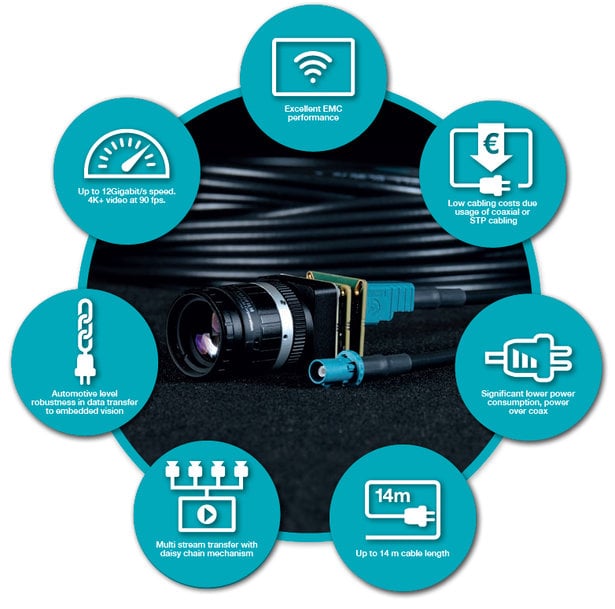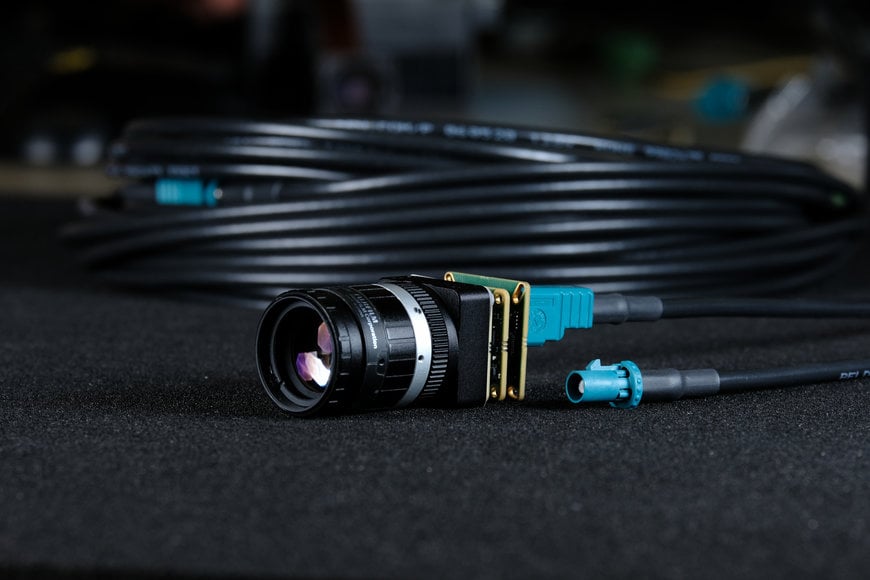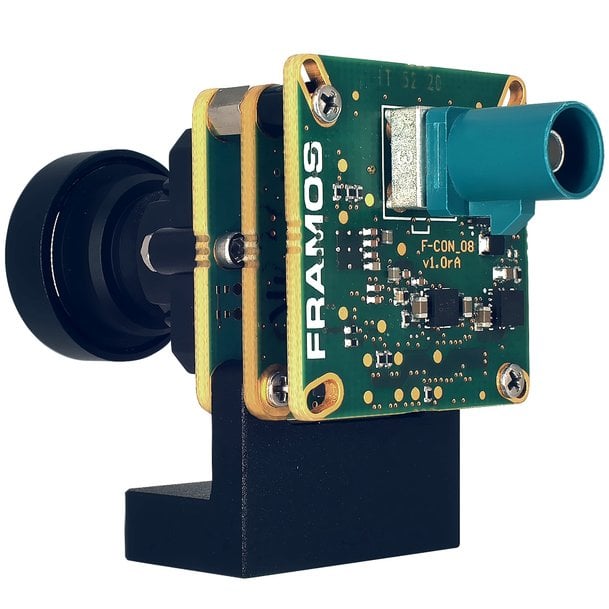www.ptreview.co.uk
19
'22
Written on Modified on
FRAMOS Makes Next-Generation GMSL3 Accessible for Any Embedded Vision Application
FRAMOS, a global supplier of custom vision solutions and imaging components, is leading the market to integrate Analog Devices’ new GMSL3 technology in the embedded vision environment.

Camera developers can use the flexible FRAMOS Sensor Module (FSM) Ecosystem to validate a large variety of image sensors in the lab and in the field. GMSL3 can transmit high frame rates (4K, 90 fps) over cable lengths of up to 14 meters with unprecedented efficiency. This interface is ideal for applications where the maximum MIPI CSI-2 (D-PHY) cable length is not sufficient while, at the same time, very low latency and a highly robust cable, with low power consumption at low cost, are essential.
Up until this point, GMSL2 (6 Gbit/s) was known for being the reliable interface for automotive applications. The new GMSL3 standard (12 Gbit/s) is the latest generation that boasts faster speeds. FRAMOS customers can now seamlessly leverage GMSL3 for faster, larger resolution, and higher data output sensors in their applications. FRAMOS’ SerDes solution, provides an extension to the PixelMate™ interface, integrating seamlessly into the existing FRAMOS Sensor Module (FSM) Ecosystem and is available as an alternative option from the standard, shorter flex cable. This design consists of two FRAMOS Functional Adapters (FFA) – with one serializer and one deserializer board – connected together with a Fakra coaxial cable, leveraged from the automotive industry. This delivers the full data bandwidth (12 Gbps), even at maximum cable lengths.
Modular by design, the FSM Ecosystem DevKits utilizing MIPI CSI-2 (D-PHY) can be seamlessly upgraded, are fully compatible with other interfaces, and can easily be customizable to suit any application. FRAMOS supports unique solutions through its experienced custom development team, ranging from concept to mass production.

Supporting both rolling and global shutter sensors with resolutions from less than 1 MP to 20 MP, the FRAMOS Sensor Module (FSM) portfolio allows customers to successfully perform a proof of concept with few limitations. Since virtually any image sensor in the FRAMOS Sensor Module Ecosystem can be connected via the GMSL3 protocol, the system is highly flexible across a wide range of applications, especially those that are deployed in tight spaces or when high quality video streams are needed to be transmitted quickly over extended distances.
GMSL3 – Sophisticated Technology with Many Advantages
GMSL3 is the third generation of Maxim’s Gigabit Multimedia Serial Link. With this interface, the latest image sensors can operate at full MIPI CSI-2 / D-PHY v1.2 specifications (4 lanes at 2.5 Gbps each), enabling vision systems with an uncompressed 4K resolution at 90 fps, delivering smooth video streams. In addition, it is now possible to integrate three 4K streams (30 fps) to transmit over a single Power over Coax (PoC) cable, enabling smooth and crisp clear sensor fusion, surround view or stereoscopic 3D imaging in real-time.

Both generations of the GMSL standard are fully compatible with each other, meaning that GMSL3 components can also be operated in GMSL2 mode with hardware from the previous generation. In addition to simple coaxial cables, the system is also compatible with cable carriers and less expensive shielded twisted pair (STP) cables with a range of up to 7 meters at full bandwidth. In accordance with automotive specifications, all GMSL components are ASIL-B/D compliant and cover a wide temperature range from -40°C to +105°C (-40°F - +221°F), what can be holistically considered within customer specific solutions.
The GMSL3 standard is currently unrivaled in the field of embedded solutions thanks to high-speed data-transfer rates and maximum efficiency longer cable lengths. Similar standards, such as FPD Link III, are inferior in terms of bandwidth. Fast vision interfaces, such as (10) GigE Vision and CoaXPress, with their focus on simple system integration, are not specialized enough to meet the requirements of highly efficient embedded systems due to comparatively high costs or power consumption.
www.framos.com

